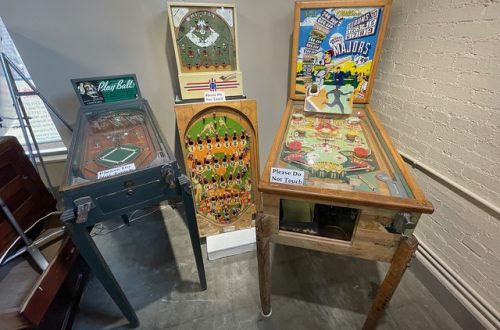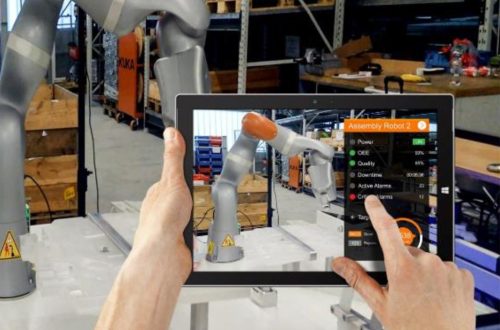How AR Solutions Can Transform Industries
How AR Solutions Can Transform Industries
AR solutions have the potential to transform many industries. They drive user engagement, increase product experience, boost sales and grow brand awareness.
Augmented reality uses sensors, cameras, and gyroscopes to relay precise information about the real world. This data is sent to platforms and apps and sometimes enhanced with artificial intelligence (AI).
Manufacturing
Manufacturing is a complex industry with countless components, materials, and procedures. It is also an expensive and time-consuming process, which means that companies are always looking for ways to improve productivity, reduce costs, and enhance safety.
Traditionally, manufacturers have relied on manuals, schematics, and other documentation to carry out their work. However, these can be time-consuming and energy-intensive to keep updated, making it difficult to get all the information they need as of when needed.
AR technology can help streamline this process, by presenting workers with digital content directly in their field of vision, making it easier for them to find the information they need as quickly as possible. This saves valuable time and money, allowing teams to complete more tasks per day.
Another way that AR can help manufacturers is in quality assurance. It can allow workers to overlay digital data on real-world objects, helping them identify defects and deviations from quality standards. This can help companies meet a higher standard of quality and ensure a high level of product accuracy.
Additionally, industrial augmented reality applications can provide live assistance for maintenance tasks and help engineers and technicians repair equipment in a timely manner. This can decrease downtime and the costs associated with repairs, while also increasing first-time fix rates.
In addition, augmented reality technology can help to automate inventory and supply chain management processes. It can help to track inventory, identify missing or misplaced items, and speed up delivery times.
It can also allow workers to view tendencies, such as how long a machine has been in service or which parts are most likely to break down. This enables workers to spot issues and take action immediately, reducing downtime and preventing damage.
Finally, augmented reality can help to train workers on new processes. It can help to streamline training and make it more efficient by allowing employees to learn through guided tasks in real time, while accessing the documentation they need as soon as they need it.
As the skills gap continues to widen in manufacturing, AR solutions will be a critical part of improving productivity and efficiency. It will offer a shorter learning curve for newly hired workers and can help to reduce training costs.
Healthcare
Healthcare is an industry that requires new, innovative technologies to be implemented. The medical field is a high-risk and regulated area that needs to be able to handle any problems in a timely manner.
Using augmented reality, companies can help improve the quality of healthcare services and ar solutions the efficiency of their processes. AR solutions can be used in various areas of the healthcare system, including education, patient care, lifestyle management, and maintenance of medical equipment.
Educational activities are one of the most obvious uses of AR. For example, if a medical student needs to create a model of a human body, AR can provide them with a 3D experience that allows them to manipulate it as they would a physical version of the model.
Another use of AR is in surgical training, where doctors can see and interact with a patient’s anatomy before they perform a procedure. Having a 3D simulation of the surgery in front of them makes it easier for doctors to make accurate decisions and ensure a successful outcome.
An example of AR’s effectiveness in the medical world is a tool that helps doctors locate blood vessels in the body. Instead of having to physically touch the blood vessel, they can simply point their smartphone at it and the smartphone will map it with SLAM technology. This helps doctors see the veins more easily and improve the success rate of blood scavenging.
AR also improves the accuracy of diagnostics and surgical procedures. For example, the Iowa Spencer Hospital found that a patient’s biopsy could be 50% more successful when the surgeon was able to view the blood vessels inside the body with a smart phone.
Other examples of AR’s effectiveness in the healthcare sector include remote assistance for technicians who work on medical test equipment. Before, they had to call in experts who came onsite to fix issues, resulting in a lot of downtime and costs.
With AR, they can connect with experts over the internet to get assistance from a tech expert who will help them troubleshoot any issues and resolve them quickly. This has helped them save hundreds of thousands of dollars on repairs and maintenance.
Education
Education is a broad term that covers a range of frameworks and activities intended to develop knowledge, understanding, skills, values, and sensibilities. This intentional process is not just limited to buildings called schools, but it also happens in other settings that include classrooms, homes, community centers, and workplaces.
Regardless of where and how this intentional process takes place, education is critical for everyone’s well-being. According to UNESCO, over 617 million people worldwide lack basic educational opportunities. This is a sad situation and one that should not be overlooked.
AR is an important component of any educational program, as it can help students understand complicated concepts and improve their skills in a variety of subjects. It also enables teachers to make their classrooms more interactive and engaging, which can motivate students to learn and stay engaged with their studies.
In addition, augmented reality can enhance student performance in the classroom by helping them remember information better. This type of technology is also beneficial for employees who need to retain knowledge at work or during study breaks.
For instance, an AR-enabled skeleton can make learning human anatomy more enjoyable and useful, as it allows students to see 3D structures in real life instead of just reading about them. This can help improve their memory and learning efficiency, making them more effective in STEM and other science-based courses.
Another great application of AR is chemistry, where students can learn about elements in the classroom using a variety of apps that bring these concepts to life. Merge Cube, for example, helps students visualize the atom weight, atomic number, chemical element, and reaction between two chemicals by putting paper cubes into the app’s viewer.
Aside from enhancing curriculum, AR can also be used to teach global perspectives through virtual field trips, as it allows students to explore cultural landmarks and destinations virtually. This allows students to experience new places in a unique way, which can help them build their empathy and appreciation for other cultures.
There are many challenges to using augmented reality in the classroom, but they can be overcome with a little planning and preparation. For starters, teachers must ensure that they have the right hardware to support AR applications. This means that they need smartphones and smart glasses with advanced hardware. They should also make sure that the software they use for AR is compatible with their operating systems.
Entertainment
Entertainment is a multifaceted sphere that includes activities such as music, ar solutions art and theatre to name a few. The ability to entertain a crowd, in the form of an impressive performance or spectacle, is one of humankind’s most valuable gifts.
A plethora of ar solutions are on hand to help you put your best foot forward in this arena. The best part is that you don’t have to be a tech guru to get up to speed in this exciting field. From augmented reality apps to gamification tools, we’ve got you covered.
The best way to find out which of our AR solutions is right for you is to ask yourself the following question: what kind of XR solution will deliver the most value for your organisation? Are you looking for an AR gaming platform, a new VR headset or an immersive experience that will engage your staff and your audience like nothing else on the market? If so, we can put together a custom-tailored solution to make your business stand out from the competition.
Our XR wizards have the experience and skill to produce AR experiences of every size and scope. The best part is that we are here to support you in this journey from conception through to delivery.



